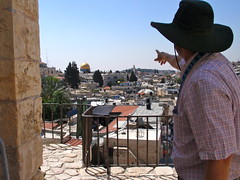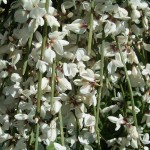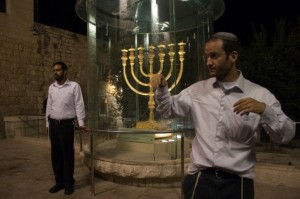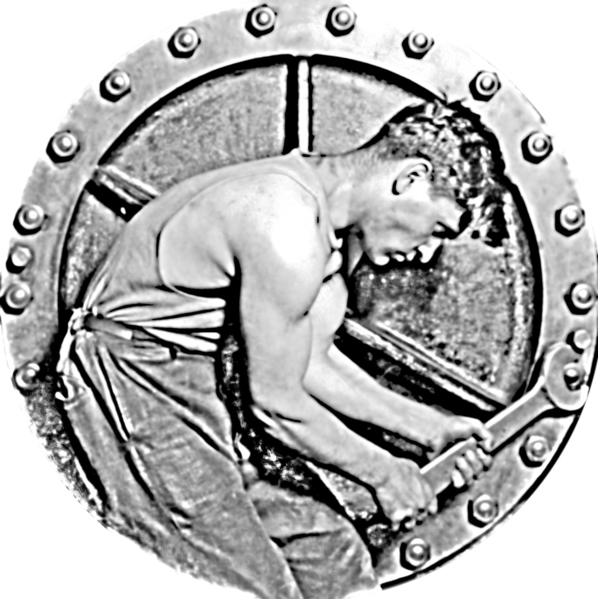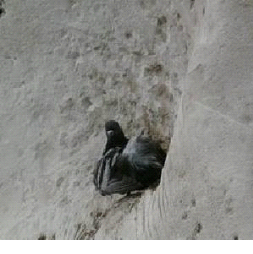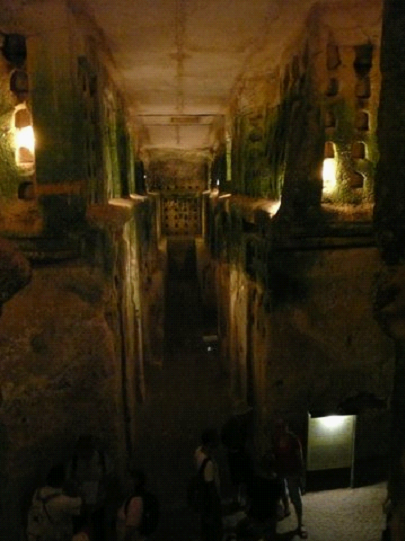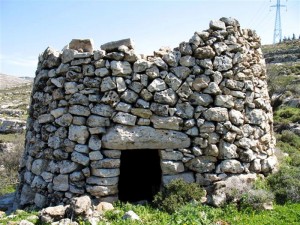
A Shomera in Wadi Jinan near road 443 (Watch this space, I am going to upload a better picture of a Shomera that I saw)
“The Daughter of Zion is left like a (sucah) booth in a vineyard, like a (melunah) shed in a field of gourds” (Isaiah Chapter 1:8)
This week is part for the 9 days of mourning leading up to the 9th of Av which commemorates the destruction of both Temples and the various tradgedies of the Diaspora. There is a tradition to read on the Sabbath before the 9th of Av from the first prophecy of Isaiah. In his prophecy he predicts the downfall of Judah and anthropomorphises her and explains how she is abandoned like a special type of building described as a ‘booth’ (a sucah) or some kind of lodging place (a melunah). Both are types of ‘Shomera’ which is a concept which has existed since ancient times and is used in arab agriculture.
The Shomera
A Shomera is used as a watchman’s booth in harvest time. During the harvest the harvester lives in a little hut next to his field until he has finished his harvesting and no longer has any more produce to protect.
So What’s So Bad about being abandoned like a Shomera?
A few weeks ago I was hiking in the beautiful hills of Sataf, which is an old abandoned village just West of Jerusalem. There is a wonderful trail that I can recommend called the ‘trail of the Shomerot’. Where you follow a trail of such booths up the hillside. It was just after midday and incredibly hot, my companions and I were forced to seek refuge inside an ancient Shomera. It certainly is not luxury accommodation, its a dank crampt little stone hut that you hide in from the scolding midday sun.
A mixture of Protection and Abandonment
The image here is stark, the ‘daughter of Zion’ is fleeing from the Sun; the harsh judgement that has been meted out to her and her only protection is a dank hut on a mountainside. Yet she does have some protection even though it is rickety and unsafe. The Shomera is a symbol of both the oppressive situation of the Jewish people and their ability to ‘cling on’ and survive in the oppressive heat of history. It is not the ideal situation but it is survival.
(These words of Torah are dedicated to the speedy recovery of Zlata bat Sima, please include her in your prayers)

